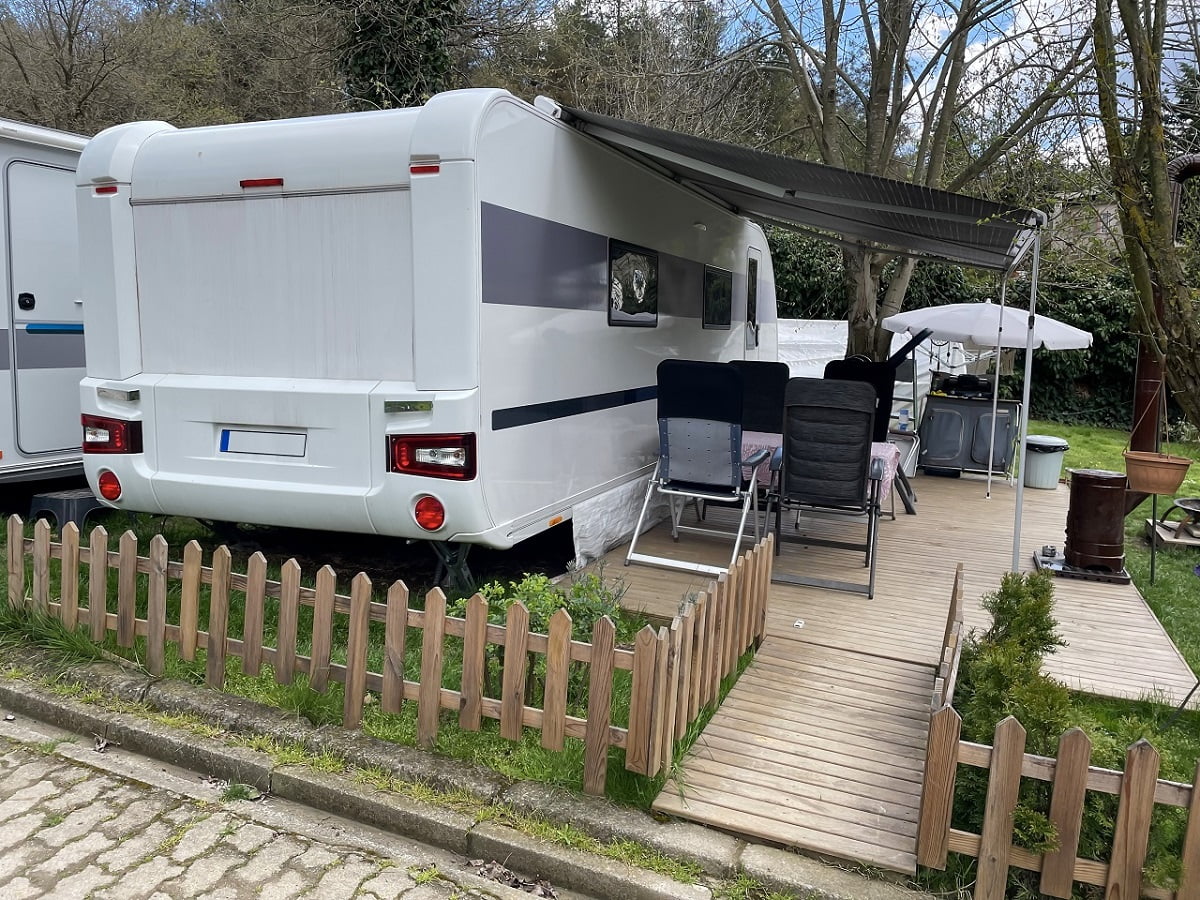A retracting electric awning is an adjustable accessory that can extend either manually or by a power awning switch. They offer shade and comfort when attached to an RV or trailer, especially during extremely hot or rainy days.

I highly recommend a retractable awning if you enjoy holding tea parties outside your house or campsite. Plus, it is fairly easy to find the best retractable awnings that cater to your individual needs and environment.
However, since retracting awnings can often get stuck, I have explored the procedure that can help with such situations. Although a YouTube video may also help, a detailed step-by-step written manual can offer better hands-on guidance. So, let’s get started…
How To Retract A Power Awning

Awareness of the basics is crucial when using any tool or device. Thorough research helped me identify potential issues and their possible solutions. To share my experience with my readers, here’s a manual or guide I have put together that I found helpful.
Reasons Why A Power Awning Can Stop Working
There are many reasons why a power awning may stop working. However, the three leading causes why an awning retraction system may malfunction are as follows:
- Broken mechanical parts
- Motor failure
- Power problems
I have listed the possible solutions using minimal tools and effort based on each of these issues.
1. Broken Mechanical Parts
Broken or malfunctioning mechanical parts are one of the primary reasons why the power awning of the RV may stop working.
First, initiate a manual override to begin looking for possible broken parts. Most awnings have a hole on top of the motor cover, which you can use to override the power awning. Use a drill and socket to rotate the motor.
Warning
If you find that the motor is grinding and does not slide smoothly, you may have a mechanical problem. You can address it by removing the plastic cover from either side of the awning and looking for broken gears and damaged fuse or wire on the motor.
2. Motor Failure
I bought a replacement motor when I found that my RV awning had a motor failure. If the motor does not respond even after connecting it to a 12 V, there might be a potential motor failure.
Tip
To check the power awning for similar problems, try to see if it is disconnected from the power source.
How To Replace A Motor On A Power Awning
Replacing the broken motor of the electric awning is not as challenging as it sounds. The whole process usually takes 25 to 30 minutes to complete if you can figure out the details. Here’s a step-by-step manual to replace the motor.
Tools Required For Replacement
- Screws and screwdriver
- A ladder
- 10 mm wrench
- A ratchet
Step 1
The first thing I did was extend the awning up to two feet. If the motor is not moving at all, you will need to override it to make some room for the replacement.
Step 2
Then, tie the awning arms to the bracket that can attach to the side of the RV. Remember to do the same on the other side when done with one end.
Note
Tying the awning arms to the bracket helps to stabilize the awning while removing the motor.
Step 3
Next, you must remove the motor covers from the front and the back. These are usually placed on the right side of the awning.
Step 4
Pull aside any wire that comes in the way and access the plugged motor. Proceed to unplug it.
Step 5
Find the three bolts connected to the motor and remove them using a 10mm wrench. This will loosen up the motor, after which you can gently remove it.
Step 6
Replace the old motor with a new one, align the gears and rotate it back into place. Once the screws are all lined up, tighten the screws and reconnect the wires.
Step 7
Begin operating the motor to see if it is working correctly. If things look good, replace the plastic covers and untie the arms.
Once you have followed these instructions, the motor should be able to retract the awning.
3. Power Problems
Perhaps the most common issue with RV retracting awnings are power problems and electric failures. If the awning motor receives insufficient power, it might be unable to retract the awning. The two possible reasons for such power failure are:
A. Loose wiring
An unstable electrical connection can sufficiently damage the retracting system of the awning and lead to electrical fires.
To test the wiring, you can unplug the fuse and awning motor and connect the battery to a 12 V power source. After connecting, if the awning moves properly, you might have a problem with the switch.
Checking the switch connection is essential to address this problem. I used a small piece of wire to connect it to a 12V power terminal and then retracted the switch. If the awning retracts smoothly after this, the awning switch needs to be replaced.
However, you might damage the awning while looking for loose wires, so it is best to call in a dealer.
B. Low Power
I have discovered that low power in the RV can lead to faulty rolling. This usually happens when the RV battery is low quality, or the 12 V power source is unstable.
The manual way to check for low power is to place a voltmeter on the battery and see the reading. You can also figure out a faulty battery by running the awning with the meter on. If the meter reading drastically drops, a battery change is required.
However, it is essential to remember that different motors have different power limits. Living in an area with strong winds requires a more powerful motor, so consider looking for the best retractable awnings for windy areas.
How To Retract An Awning Manually
If an awning is simply stuck and does not require fixing, retracting it can be pretty easy. Let us look at the retraction manual that works for me:
Step 1
Unlock the travel latch connecting the awning to the side of the RV. Also, an awning that is spring-loaded may have knobs that require loosening. Repeat this for the other side. Then, turn the locking lever to a “roll down” position using the awning rod.
Step 2
Pull and attach the rod to the strap loop. I often walk backward with the rod to help with the pulling. However, two people are sometimes required to be present for this. Since one end of the awning can get stuck, the other person may need to tug the arm.
The arms remain in place even after letting them go on awning models that do not have a spring. Thus, it is essential to know your type of electric awning.
Moreover, spring-loaded awnings may require you to slide the inner arm towards the upper arm and press on the arms until the fabric is taut. After that, tighten the knobs and repeat on the other side.
You can also adjust electric awnings according to your height and angle of comfort by simply pulling the lever or latch on each arm.
Step 3
When this process is complete, remove the strap and secure it to the RV.
Warning
If the strap is allowed to hang loosely, someone might accidentally tug at it, which can collapse the awning. To prevent this, ensure that the strap is secured.

How To Manually Retract Electric Awning Final Thoughts
An electric awning is a must-have for every RV and trailer. But are retractable awnings worth it? Yes, they are.
Retractable awnings can keep our vehicles cooler and more comfortable. Moreover, they are convenient since you can retract the awning with just the touch of a button. Or if things go south, you can quickly fix it using a manual.
In my experience, the outdoor space looks much more attractive after attaching an electric awning to my RV. It also helps when I wish to step out in the dark or the rain without the risk of getting wet.
That ends my manual on how to retract an electric awning. I have published another informational guide titled “What Size Pool For Volleyball?” where I share my insights on pool sizes.
That said, I’ll be signing off now. Until next time, stay safe!
